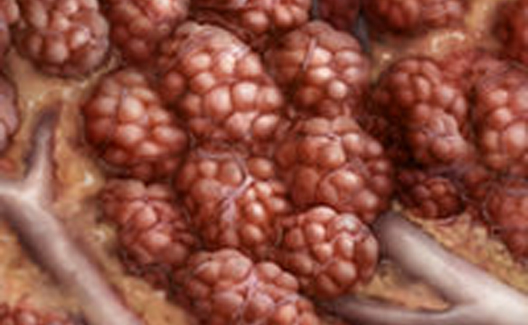External
- Breasts enlarge
- Nipples darken, and skin thickens
- Nipple sensitivity increases
- Areola enlarges and darkens
- Montgomery glands enlarge and begin secretion

The breast is made up of glands, ducts, blood, fat, and more. Internally there is branching of milk ducts and growth of the milk-making cells. The breasts are fully ready to make milk by 16-20 weeks of pregnancy, during which a woman may begin to see increased vascularity and the first signs of colostrum secretion.
Milk ducts appear more like tangled tree roots intermixed with the fatty tissue, which makes them difficult to avoid during breast surgery. During pregnancy, estrogen controls the growth of the ducts and progesterone controls the growth of the glandular buds. Prolactin contributes to increasing the breast tissue during pregnancy. COX-2 activity in the breasts has been found to be positively associated with breast volume in women.
The pregnant woman will notice increased firmness, tenderness and veining due to the increased blood supply and nerve development. All these changes are in preparation for breastfeeding the baby after birth.
Like a sweat gland, the breast is always making milk. It is never completely empty. When assessing a mother, it is a good idea to palpate the breasts to observe the presence of glandular tissue which will feel like grapes inside the breast. Some women have a lot of glandular tissue and others do not. If there is not a lot of glandular tissue, there may be a risk for low milk supply, so it is important to monitor this mother and baby closely.
Internal
- Several hormones influence this maturation including progesterone, estrogen, prolactin, human placental lactogen, growth hormone and an insulin-like growth factor 1 (IGF-1).
- More branching of ducts
- Growth of alveoli (milk-making cells)
- Breasts fully ready to make milk by 20th week of pregnancy





